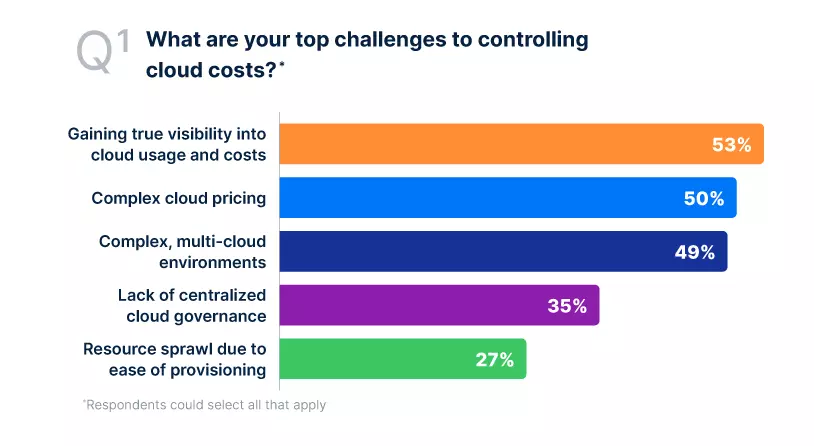Addressing Cloud Adoption:
Transforming Challenges into Opportunities
Cloud adoption has proven to be an essential catalyst for digital transformation in businesses around the world. However, as organizations embark on this cloud journey, they face a series of challenges that can slow down or halt their progress. According to cloud adoption challenge statistics presented by Cybersecurity Insiders in 2022, several unforeseen factors have emerged as key obstacles to this transition.

From lack of visibility and high costs to security concerns and resource shortages. So each challenge presents an opportunity to strengthen the cloud adoption strategy. In this publication, we will explore each of these challenges and provide insights on how to overcome them successfully, thereby championing cloud adoption as an engine for business efficiency and agility.
Lack of Visibility (49%)
Lack of visibility in cloud adoption can lead to unpleasant surprises in terms of costs and performance. To address this challenge, it is crucial to implement monitoring and management tools that offer a comprehensive view of cloud resources, allowing real-time tracking of costs and utilization. Through intuitive dashboards and automated alerts, organizations can make informed decisions and adjust their infrastructure as needed, thus optimizing their cloud investment.
High Costs (43%)
The perception of high costs in cloud adoption often stems from a lack of proper cost management strategy. To counter this, companies should focus on planning and efficient resource allocation. Adopting flexible pricing models, such as „pay-as-you-go,“ can help reduce unnecessary expenses. Additionally, identifying and eliminating unused or underutilized resources through constant analysis can significantly decrease operational costs.
Lack of Control (42%)
Concerns about losing control in the cloud are understandable, but it’s important to understand that cloud adoption doesn’t equate to loss of control. Organizations can implement strict security and management policies through cloud management services. These services allow defining and enforcing access, encryption, and regulatory compliance policies, ensuring that data and resources are protected and effectively managed.
Lack of Personnel Resources or Experience (39%)
Overcoming the lack of cloud personnel or experience is achieved through training and collaboration. Internal training or hiring cloud-experienced personnel—either internal or external—can mitigate this challenge. Additionally, leveraging managed services offered by cloud providers can free up internal teams to focus on more strategic tasks while relying on external experts for management and technical support.
Lack of Security (22%)
Security remains a critical priority in cloud adoption. Contrary to popular belief, both public and private clouds offer robust and constantly updated security levels against new cyber threats. To address the lack of security, it’s essential to implement multi-layered security strategies, including encryption, two-factor authentication, and granular access control. Furthermore, collaborating with cloud service providers offering compliance certifications can enhance confidence in cloud infrastructure security.
Addressing these cloud adoption challenges requires a combination of strategic focus, training and collaboration with trusted vendors. Cloud adoption can provide enterprises with agility, scalability and operational efficiency, provided that best practices are applied and continuous optimization of cloud resources is prioritized. By solving these challenges, organizations can take full advantage of the benefits the cloud offers in their pursuit of business excellence.
